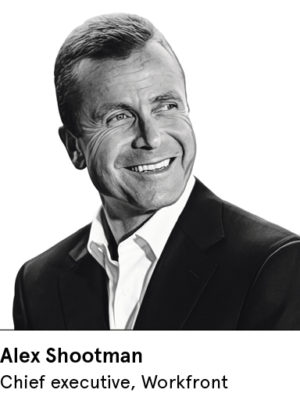 We are all living a double life: inhabiting the 21st century at home and the 20th at work.
We are all living a double life: inhabiting the 21st century at home and the 20th at work.
One of those lives is rich in digital opportunities to do things faster and more easily; the other traps us in analogue conventions and old-school behaviours that aren’t fit for now or the future.
To get work done and Done Right, the title of my new book about getting stuff done in a modern work environment, we need to think differently in two key ways about business technology and management.
First, we must realise that adopting new tech has wider implications for how people get work done than just plugging in a new device or logging in to a new app. Second, we must adopt business tech that actually delights end-users.
Changing tools means changing the way work gets done
Too often, new workplace tech gets bolted on to existing ways of working rather than helping to re-imagine them.
“Digital transformation is an ongoing process of changing the way you do business,” write academics Thomas H. Davenport and George Westerman. They add: “It requires mixing people, machines and business processes, with all of the messiness that entails.”
This means re-imagining leadership and management structures too. Eddie Obeng, professor of entrepreneurship at Henley Business School, explains in Done Right: “In the old world, you could get an idea to a boss, they could make a decision and pass it down. Now information is moving at a thousand times that speed. You can never supply enough information to your top team for them to be informed, and make a sensible decision and pass it down. The hierarchy is broken. It doesn’t work. We need a networked system.”
We need digital technologies and management approaches that break the 20th-century structure still caging most enterprises. We need to allow insight and wisdom wherever it exists to spread up, down and across the network rapidly. We need a new operating model that combines digital technologies and operational capabilities in an integrated, well-sequenced way to overcome the digital work crisis many companies are battling.
Business tech needs to match consumer tech
According to Workfront’s latest State of Work Report, a survey of more than 2,000 knowledge workers in the UK, 44 per cent of employees are actively requesting new digital tools.
They almost certainly want workplace apps that delight them like their personal tech does. After all, consumer apps orientated to fast actions have created a quiet revolution in our family life.
They’ve changed how we play, how we think about our health and how we shop. With voice commands, we change the temperature in a room or change the music we’re listening to. With a single finger tap we can communicate our mood to friends and family miles away with whatever emoji fits the moment best. And we can record and benchmark almost every task we pursue.
The cornerstone of great consumer tech and apps is simplicity and swift steps towards a clear outcome, wherever the user happens to be, whenever they want.
The problem, is we leave that behind when we head to work. We commute against the clock by choosing between 20th-century, or older, modes of transport, whether by foot, two wheels, four wheels or train.
We claim our desk in an office and work within a hierarchical structure that is as least as old as the British Empire’s East India Company in the 17th century, arguably with echoes of the Roman Empire. And we follow processes that often echo the era of paper-and-ink ledgers, and we battle a cacophony of disconnected and ossified technology tools that feel like they were created by a latter-day Victor Frankenstein.
Those cables at the back of your desktop computer and landline phone, they’re chains holding you back from getting work done faster and more flexibly.
How will they feel?
Twenty years ago, the question guiding business investment in technology was binary: is this going to work or not?
Today and in future, the question should be: how will my team feel when they’re using this? We must heed the words of neuroscientist Professor António R. Damásio: “We are not thinking machines that feel, we are feeling machines that think.”
If the answer is liberated from their desks, saved from analogue processes, and able to act more quickly on what matters to both them and the business, you’ve arrived in the 21st century. That’s when your team is logging in, not walking in.
For more information please visit workfront.com
